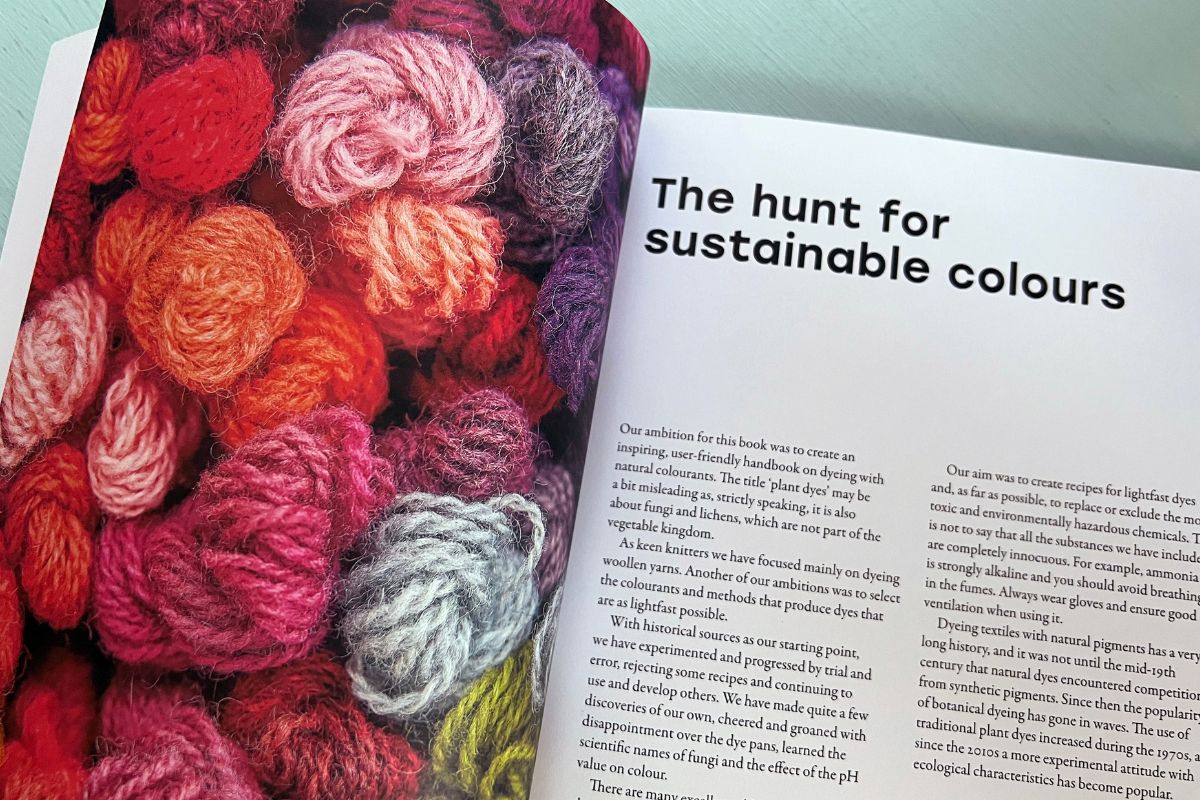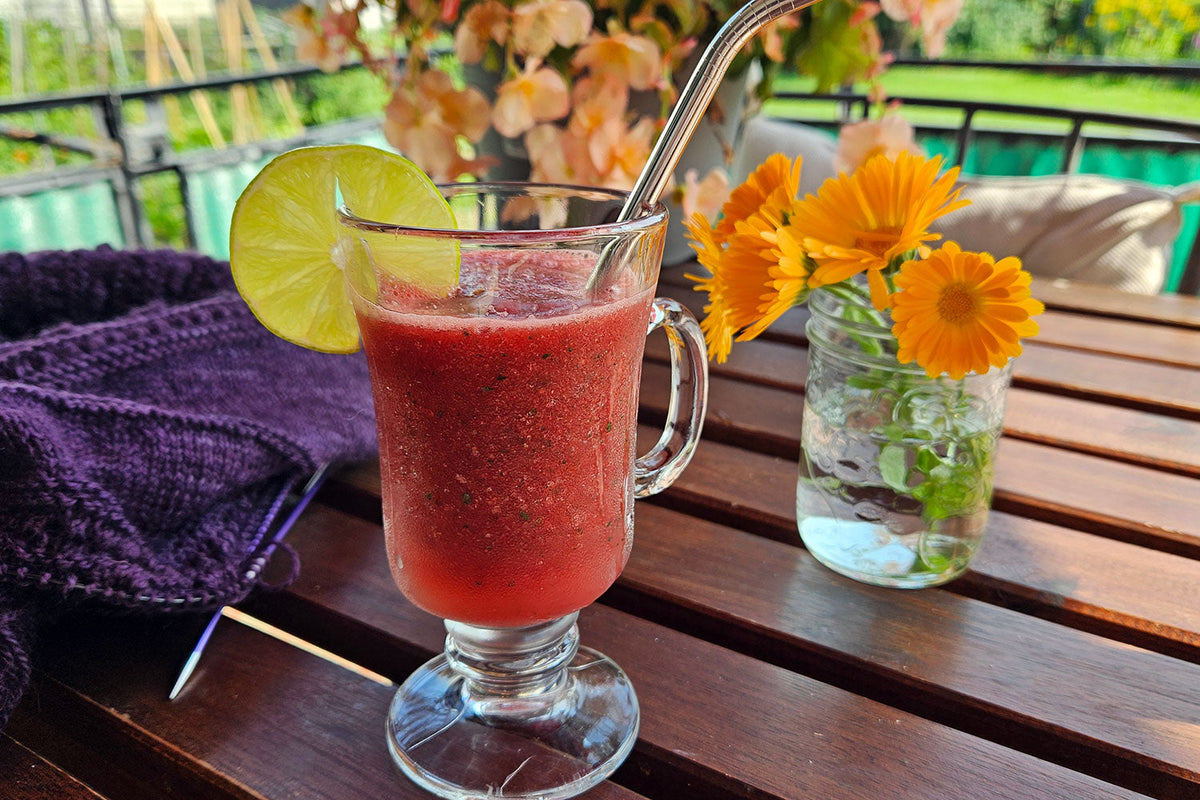Meet the Designer: Ainur Berkimbay of Toqu Tigu

We love Ainur Berkimbay's fun and unique style - she has so many amazing patterns that we'd love to knit. So we were super excited when she agreed to collaborate with us on a new design! She's just released Capsa, a cozy sleeveless cardigan knit with 4-8 skeins of Winfield, our lofty woolen-spun 100% Canadian wool (shown here in Sugar Maple).
One of our favourite parts of collaborating is getting to know the talented and creative people we work with, so we asked Ainur to answer a few questions about herself and her designs process. We hope you enjoy getting to know her a little too!
All images shared with us by Ainur Berkimbay

How long have you been knitting, and when did you start designing?
I learned to knit around the age of 8. I had been wanting to learn it for as long as I can remember, but my mom refused to teach it to me until I could cast on stitches neatly with the long-tailed cast-on method. Around the age of 8, I finally achieved that. My mom taught me how to form knit stitches, and I took off designing clothes for my dolls.
While my mom was trained as a nurse, there was a long period when she was unemployed. You see, after the USSR fell apart, my home country, Kazakhstan, along with all the Soviet member countries, went through a long period of readjustment marked by inflation, unemployment, and overall instability. Both my parents had lost their jobs, and their savings became worthless due to high inflation. Anyway, my mom had always had a knack for sewing, so she started making clothes for people. She was so good that we had a constant stream of people coming to get clothes made for everyday wear as well as special events. My mom also taught me the basic principles of constructing clothes. With all the scraps of fabric left over from mom’s work, I had plenty of material to make clothes for my dolls. I dare say that my dolls were the best-dressed dolls in our neighborhood. I consider this time as the start of the design journey.
If we are talking specifically about designing knitting patterns, then I would say 2015. That’s when I had my first child. With the sleepless nights of taking care of a newborn, who later developed terrible acid reflux, I had to occupy my mind to keep myself awake during these long nights. I would knit and reknit baby hats, trying to come up with interesting elements. I started posting photos of my makes on social media, and a few people would comment, asking for directions or offering to test-knit patterns. That’s how it all started!
Where does your inspiration come from? What was the inspiration behind the Capsa design?
My inspiration comes from various places. I am mainly inspired by visual elements (what I see), texture (what I can touch and feel), and stories (how things make me feel). So, for Capsa Cardigan, I loved the toothy feel of the Winfield yarn. It has a gorgeous texture that I wanted to highlight. The Sugar Maple colorway spoke directly to my fall-colors-loving heart. It immediately made me think of smoked paprika, which is my favorite spice. That color and feel of the yarn conjured up this cozy and warm feeling that I wanted to create in a garment form. I knew it had to be a cardigan. Sideways construction and geometric elements fascinate me, so I found a way to incorporate them into this design. Capsa is a Latin root word for paprika’s species name, capsicum. Apparently, it stands for box, which I thought was a very fitting name for this cardigan, given its boxy shape.
Can you tell us about your cultural background, and how that influences your work?
I am from Kazakhstan (immigrated to the US in 2013), a country with vast lands and a long history of nomadic life that centered around shepherding. You could say wool is in my DNA. Growing up, I would spend summers with either side of my grandparents, who had livestock, and I would see them tend to sheep, shear them, and process the wool and meat. I just love wool, its smell, feel, and how it brings comfort and peace when I use wool items. Even our traditional dwellings, yurts, are made from felted wool. Working with wool, whether spinning or knitting, is a deeply spiritual practice that connects me to my ancestors.

How does your crafting/design practice reflect your values?
I believe in making the most of what you have. That’s how I grew up; that’s how my family managed to get by during the tough times of the USSR collapse; and that’s the wisdom my grandparents, who survived the genocide of the 1930s, would constantly share with me. When designing patterns, I love helping knitters find yarns that are accessible and affordable. I also love designing patterns that allow for the use of scrap yarns.
I believe in accessibility in all forms. I try to include visual guides in my patterns to help knitters have a better understanding and control of what they’re making. I also offer “Pay What You Can” discounts to help make my patterns affordable to more people.
Do you do any other handcrafts, such as crochet, spinning, sewing, weaving, pottery, beadwork, etc.? Any other artistic endeavours?
I love processing wool and spinning yarn. Occasionally, I take on sewing projects. Lately, I have taken up bird-watching, which has inspired me to start drawing and painting birds. I’m also interested in playing guitar. I do plan to learn to crochet, take up pottery, and possibly beadwork. There are so many amazing things to try and learn!Thank you Ainur for taking the time to share with us! If you'd like to knit your own version of the Capsa cardigan you can find the pattern on Ravelry and Payhip, and you can find all of the colours of our Winfield yarn here.
Leave a comment
Also in News

Choosing a Natural Dye Book
Have you ever tried dyeing your own yarn using natural colorants? Are you now looking for more inspiration? Or maybe you’ve always been curious, and are wondering where to begin. Below, we’ve introduced four books that could be exactly what you’re looking for!

Knitting Comfortably: The Ergonomics of Handknitting
One month ago, I found myself in the emergency room with unbearable back pain. I later learned it was caused by a herniated disc and osteoarthritis (OA) that had taken over my entire lower back. Would I ever be able to dye yarn again, let alone... knit...?

Recipe: Watermelon Slushie
What do you do when you have a glut of watermelon? Freeze it and make watermelon slushie! I started doing this last summer and it's the perfect way to use up a watermelon, especially one that's a bit overripe. Plus, with a touch of lime and mint it really hits the spot on a hot day!







Debbie Sullivan
Author